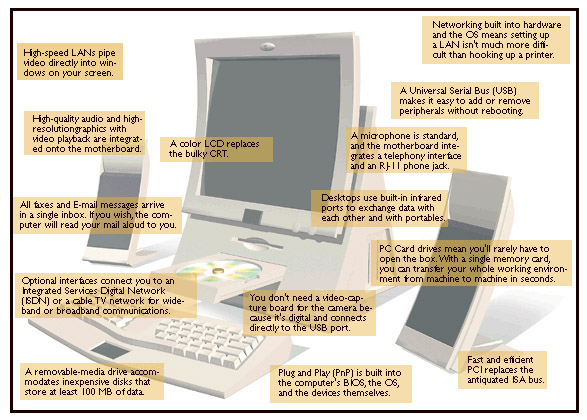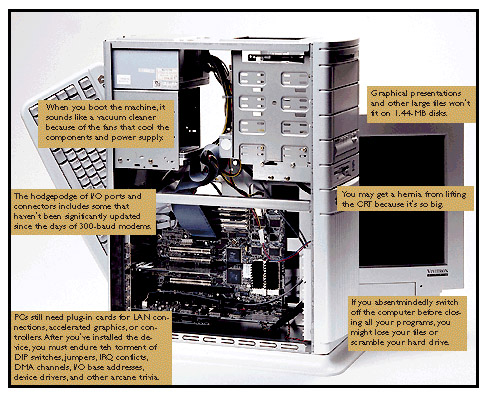| Now that PC architecture is being overhauled (see main
story), how different will your next PC look? Our cover
shows three possibilities: The Apple Sweep and IBM
Leapfrog are industrial designs, while the Archistrat 4b
was scheduled to ship commercially as we went to press.
All three are significant because their capabilities, as
well as their external design, are made possible by the
new technologies being incorporated by the next generation
of PCs. Sweep designer Tim Parsey says the flat-panel display inspired Apple to create a desktop system built around components that are smaller and thinner than conventional PCs, but offer the same computing power as the stacked boxes we're used to working with. Inside the Sweep is a standard motherboard that can house next-generation PowerPC chips. The keyboard tucks away into the horizontal stand. The main vertical segment holds CD-ROM, hard-disk, PC Card, and floppy drives. Built-in audio gets a boost from two tweeters and detached external speakers. The Leapfrog also uses the LCD to break the bounds of the desktop mold. The portable display panel holds the CPU, as well as the hard-disk, floppy, and PC Card drives. The pen stylus and pen-based software launch applications. For a more traditional desktop unit, attach the LCD panel to the docking station (nicknamed the lily pad), which features a slide-out keyboard. The Archistrat Systems 4s and 4b computers use a custom connector that sits between a partitioned motherboard and a passive backplane. The architecture lets you mix and match CPUs, I/O subsystems, and other fundamental components to accommodate your needs (for details, see the sidebar "Coming Soon: Archistrat 4s"). The New PC The Old PC Copyright 1994-1998 BYTE |